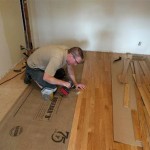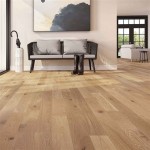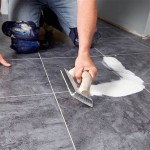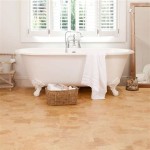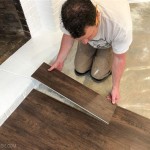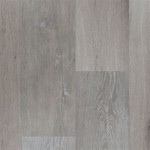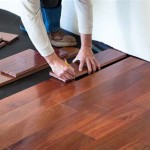What To Use to Get Paint Off of Wood Floors
Removing paint from wood floors requires a delicate balance between effectively lifting the paint and preserving the integrity of the wood. The appropriate method depends on several factors, including the type of paint, the type of wood, the age of the paint stain, and whether the floor has a protective finish. Incorrect techniques can damage the wood, leaving unsightly scratches or requiring costly repairs. Therefore, a thoughtful approach, starting with the least abrasive method and progressing to more aggressive options as needed, is crucial.
Before commencing any paint removal process, it is essential to identify the type of paint that needs to be removed. Common paint types include latex (water-based), oil-based, and acrylic paints. Latex paint, being water-based, is generally easier to remove than oil-based paints. Acrylic paints fall somewhere in between regarding removal difficulty. Understanding the paint type allows for the selection of the most appropriate and effective removal solutions.
Furthermore, the type of wood floor is a critical consideration. Hardwoods like oak, maple, and hickory are more durable and can withstand slightly more aggressive cleaning methods compared to softer woods like pine. Pre-finished floors often have a protective coating that can be damaged by harsh chemicals or abrasive tools. Testing any cleaning solution in an inconspicuous area is paramount to ensure it does not discolor or damage the finish.
Initial Cleaning: Gentle Approaches for Fresh Paint
For fresh paint spills or splatters, simple cleaning methods are often sufficient. These methods minimize the risk of damage to the wood floor and should be the first approach considered. The primary objective is to remove the paint before it has a chance to fully cure and bond with the wood surface.
A damp cloth is the first weapon against wet paint. Immediately blotting the spill with a clean, damp cloth can effectively lift the paint before it sets. Avoid rubbing the paint, as this can spread it further and grind it into the wood grain. Change the cloth frequently to prevent re-depositing paint onto the floor.
For slightly dried but still relatively fresh latex paint, warm water and dish soap can be remarkably effective. Mix a small amount of mild dish soap with warm water to create a gentle cleaning solution. Apply the solution to the paint stain using a soft cloth or sponge, gently scrubbing in a circular motion. Rinse the area with clean water and dry thoroughly with a clean cloth. Avoid prolonged exposure to water, as it can damage the wood over time.
Baking soda paste can also be useful for removing fresh paint. Mix baking soda with water to create a thick paste. Apply the paste to the paint stain and let it sit for a few minutes to soften the paint. Gently scrub the area with a soft cloth or brush. Rinse with clean water and dry thoroughly. Baking soda is a mildly abrasive agent that can help lift the paint without causing significant damage to the wood.
Utilizing Solvents: When Gentle Methods Fail
When dealing with dried or stubborn paint stains, solvents might be necessary. Solvents are chemicals that dissolve or soften paint, making it easier to remove. However, caution is advised when using solvents, as they can be harsh and potentially damaging to the wood floor and its finish. Adequate ventilation is crucial when using solvents, and protective gloves and eyewear should be worn to prevent skin and eye irritation.
Mineral spirits are a relatively mild solvent that can be effective for removing oil-based paint. Apply mineral spirits to a clean cloth and gently dab the paint stain. Allow the mineral spirits to sit for a few minutes to soften the paint. Then, gently scrub the area with the cloth. Regularly change the cloth to prevent re-depositing dissolved paint. Wipe the area with a clean, damp cloth to remove any residual mineral spirits and dry thoroughly.
Paint thinner is a stronger solvent than mineral spirits and should be used with more caution. It is effective for removing both oil-based and latex paint. Apply paint thinner to a clean cloth and carefully dab the paint stain. Allow it to sit for a short period, but avoid prolonged exposure to the wood. Gently scrub the area with the cloth, frequently changing the cloth as needed. Thoroughly wipe the area with a clean, damp cloth to remove any remaining paint thinner and dry completely.
Acetone is a very strong solvent and should only be used as a last resort. It can quickly dissolve paint but can also damage the wood finish if used improperly. Apply a small amount of acetone to a clean cloth and carefully dab the paint stain. Work quickly and avoid allowing the acetone to sit on the wood for more than a few seconds. Gently scrub the area with the cloth and immediately wipe the area with a clean, damp cloth to remove any residual acetone. Dry thoroughly. Acetone should be used with extreme caution and only in well-ventilated areas.
When using any solvent, it is crucial to spot-test in an inconspicuous area first to ensure it does not damage or discolor the wood finish. If the solvent causes any adverse effects, discontinue its use and consider alternative methods.
Physical Removal Methods: Scraping and Sanding
If gentle cleaning methods and solvents prove insufficient, physical removal methods like scraping and sanding may be necessary. These methods involve physically removing the paint from the wood surface. However, they also carry a higher risk of damaging the wood, so caution and precision are essential.
A plastic putty knife or scraper can be used to gently scrape away dried paint. Choose a plastic tool over a metal one to minimize the risk of scratching the wood. Hold the scraper at a low angle and gently push it under the edge of the paint stain, lifting it away from the wood. Avoid applying excessive pressure, as this can gouge the wood. Work slowly and carefully, removing small sections of paint at a time.
For particularly stubborn paint stains, a heat gun can be used to soften the paint before scraping. Apply heat to the paint stain in short bursts, keeping the heat gun moving to avoid scorching the wood. As the paint softens, gently scrape it away with a plastic putty knife. Be extremely careful when using a heat gun, as it can easily damage the wood if used improperly. Wear appropriate safety gear, including gloves and eye protection.
Sanding should be reserved as a last resort due to its abrasive nature. Use fine-grit sandpaper (120-grit or higher) and gently sand the paint stain, working in the direction of the wood grain. Avoid applying excessive pressure, as this can create unevenness in the wood surface. Regularly check the progress to avoid sanding through the wood finish. After sanding, clean the area with a tack cloth to remove any sanding dust. Sanding will inevitably remove some of the existing floor finish; therefore, refinishing the sanded area, or the entire floor, will likely be necessary to achieve a uniform appearance.
When using physical removal methods, it is important to proceed with caution and patience. Small, incremental steps are preferable to aggressive action, as they minimize the risk of damaging the wood floor.
After removing the paint, regardless of the method used, thorough cleaning of the area is essential. Use a mild wood cleaner to remove any residual paint, solvent, or cleaning solution. Rinse with clean water and dry thoroughly with a clean cloth. Inspect the area for any damage, such as scratches or discoloration. If necessary, consider refinishing the affected area to restore its original appearance.
Preventing paint spills in the first place is always the best strategy. When painting near wood floors, use drop cloths or plastic sheeting to protect the floor from paint splatters. Take extra care when pouring paint or moving paint containers. By taking preventative measures, the need for paint removal can be minimized, preserving the beauty and integrity of the wood floor.

Don S Room Progress How To Remove Paint From Wood Floors At Home With Ashley

How To Remove Paint Off Hardwood Floors Safely

How To Remove Paint From Hard Wood Floors

How To Remove Old Paint From A Wooden Floor Esb Flooring

Easily Remove Paint From Your Floors

Tested 10 Easy Ways To Get Paint Off Hardwood Floors Torera George

Don S Room Progress How To Remove Paint From Wood Floors At Home With Ashley

Does Wd 40 Remove Paint From Hardwood Floors Mr Sander

Removing Paint From Wood Flooring And Beyond Blog

How To Get Paint Off Of Hardwood Floors Easy Tutorial
See Also

